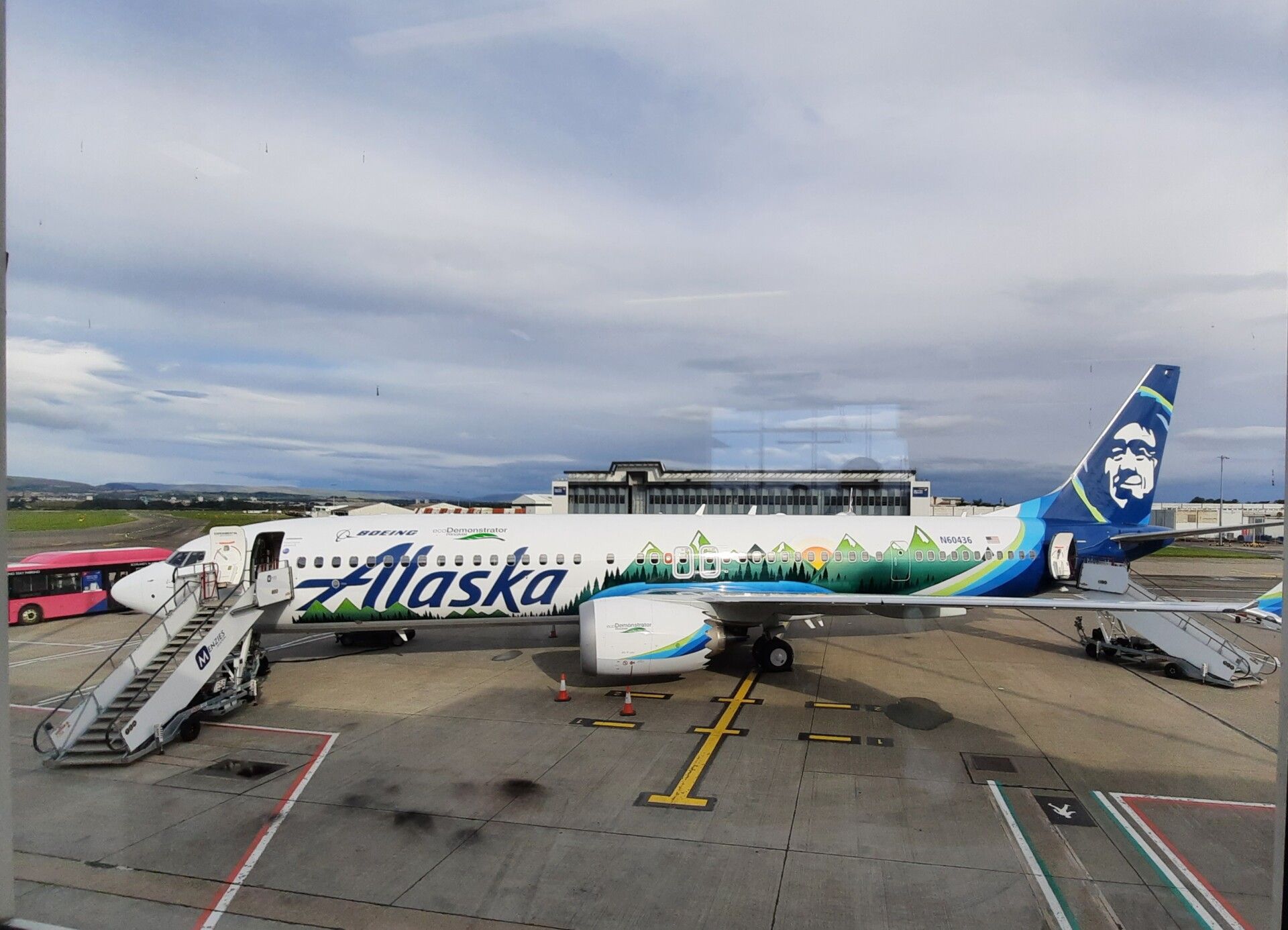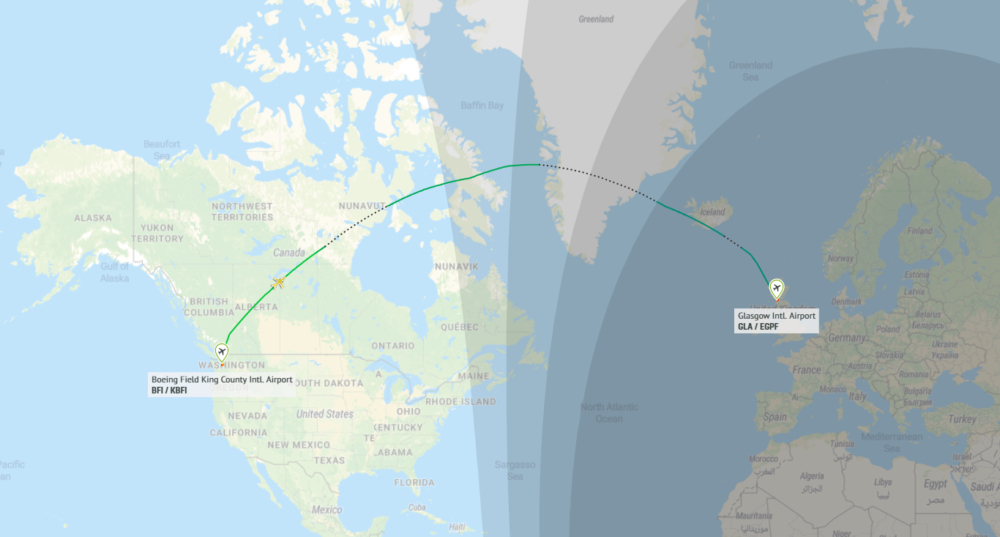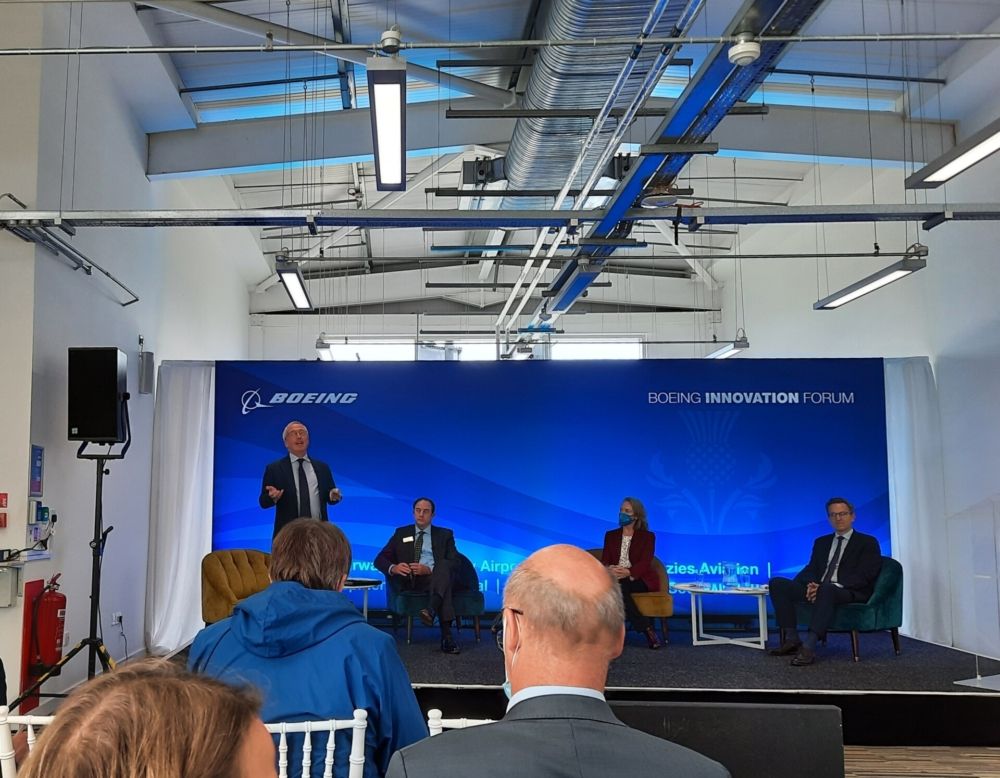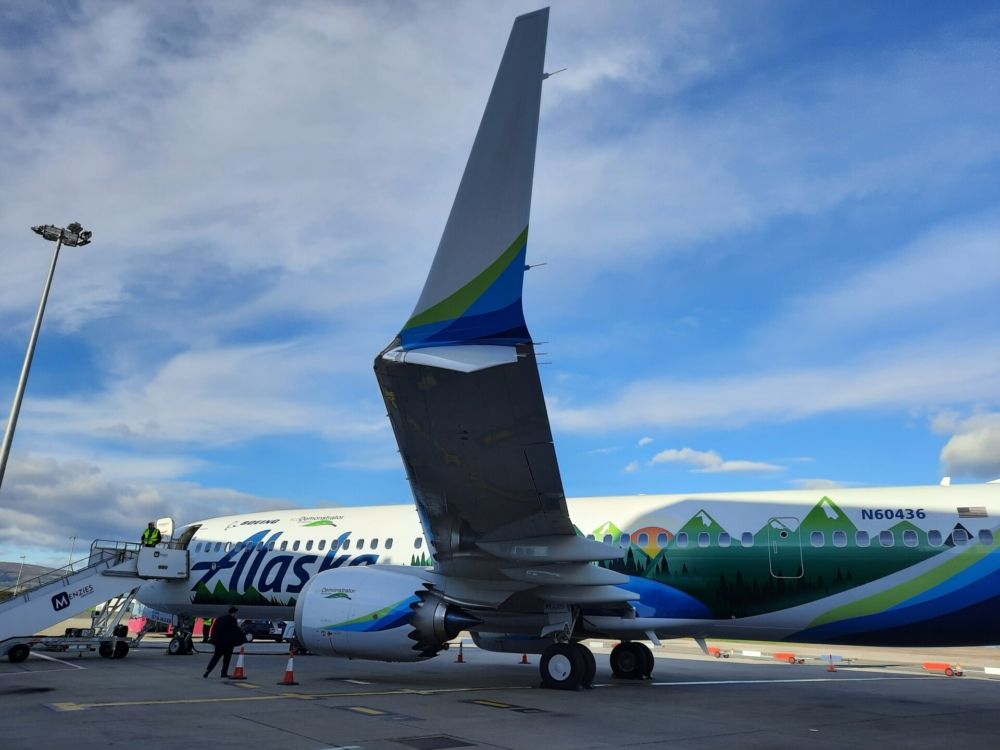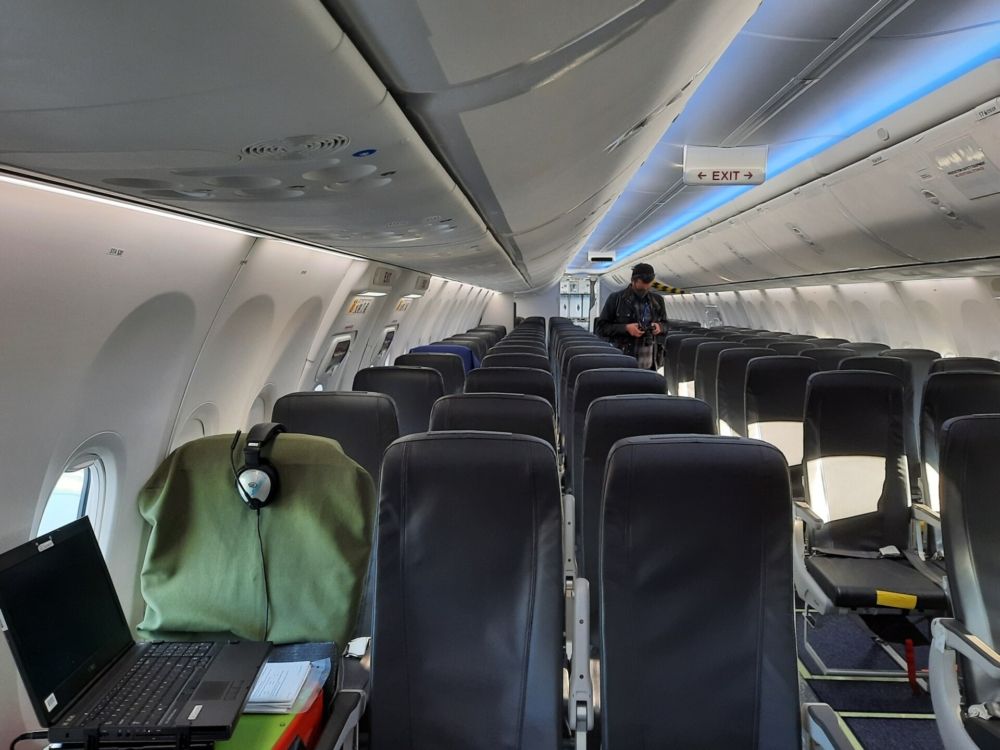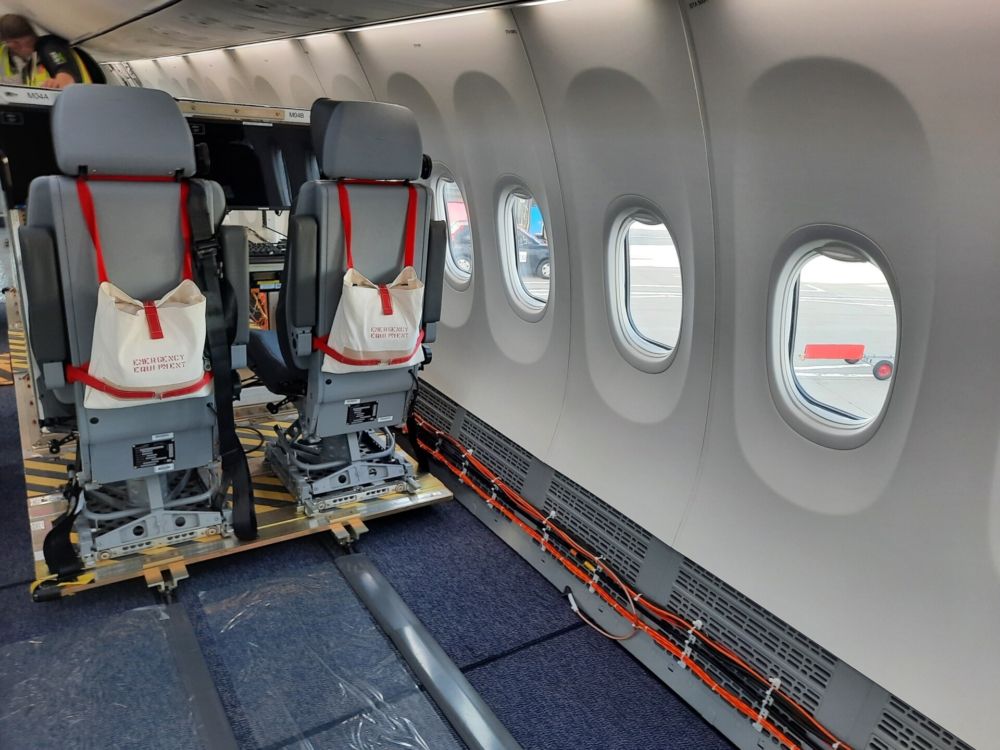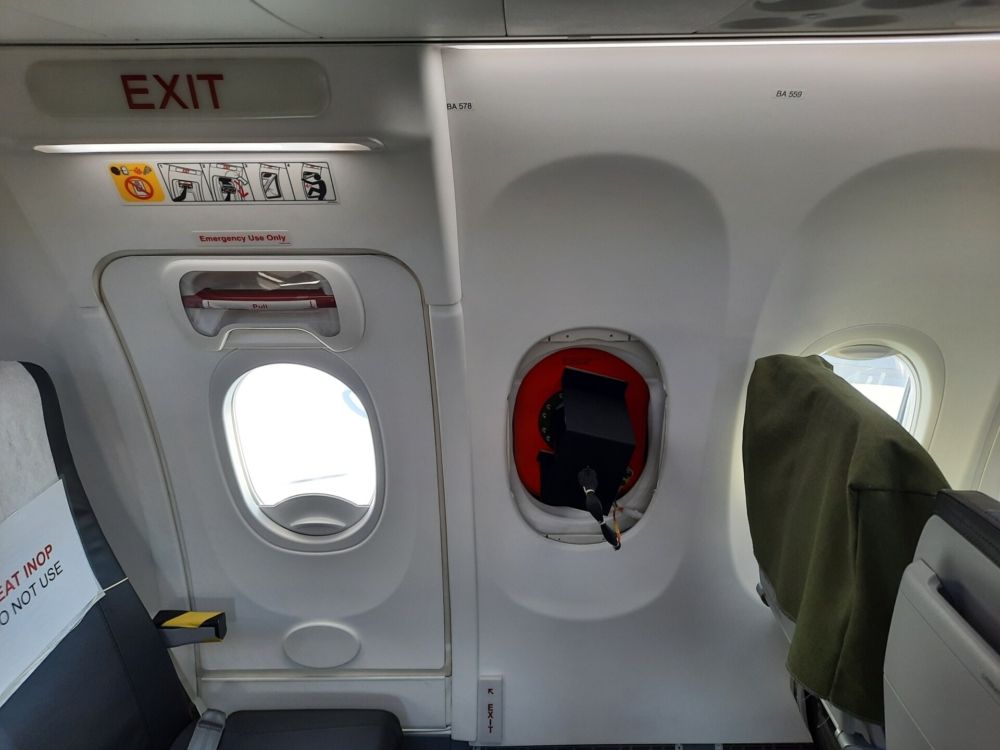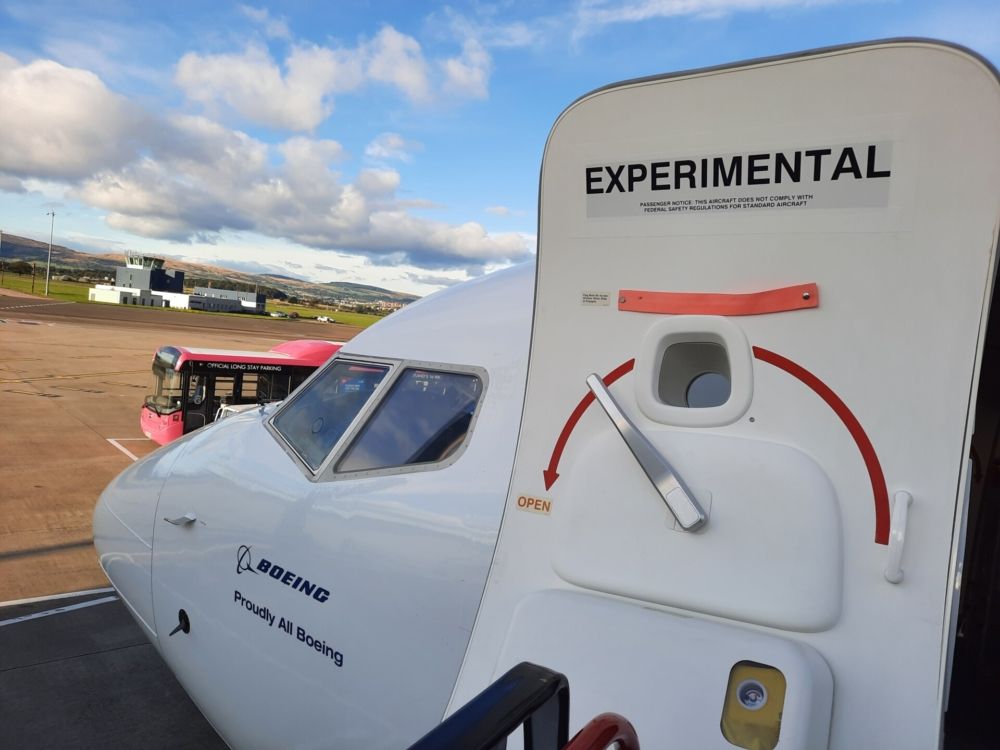The latest iteration of Boeing's ecoDemonstrator program has seen the US planemaker join forces with Alaska Airlines. The new oneworld member has offered the services of one of its future 737 MAX 9s for the scheme, which is currently visiting Glasgow. Simple Flying took a trip up to Scotland to take a look inside Boeing's eighth ecoDemonstrator plane.
The aircraft in question
The Alaska Airlines 737 MAX 9 that Boeing is using for this year's ecoDemonstrator program is the eight aircraft that has lent its services to the scheme. Earlier today, Simple Flying took a look back at all of the planes that have been deployed for this purpose in the past. The special aircraft in this instance bears the registration N60436.
While data from ATDB.aero shows that it was built in May 2019, the two-and-a-half-year-old plane is yet to join Alaska Airlines. It will do so in 2022, and has spent its career thus far under the ownership of Boeing. According to data from ch-aviation.com, Alaska Airlines has six of these next-generation twinjets in its fleet, and another 73 on order.
The aircraft flew directly to Glasgow from Boeing Field in Seattle on October 3rd and 4th. Data from RadarBox.com shows that it departed Washington State at 13:38 local time. It touched down in Scotland eight hours and 14 minutes later at 05:52 the following morning. Interestingly, RadarBox data shows that N40436 also flew to Glasgow twice in July.
Why Glasgow?
Boeing and Alaska Airlines both have a heavy presence in Seattle. As such, you might be led to wonder why they would choose to bring the flagship of their sustainability collaboration eight hours across the North Atlantic Ocean to Scotland's second-busiest airport. In actual fact, the location of the tour isn't as random as it initially appears.
After all, the US planemaker has a strong connection with the country, having established the 'Boeing Scotland Alliance' in March 2020. This has seen it create 200 supply chain jobs in the country, as well as investing millions of pounds into research and development projects. Europe as a whole is also a key market for Boeing despite its US roots.
Speaking at today's event in Glasgow, President of Boeing Europe and Managing Director of Boeing UK and Ireland Sir Martin Donnelly explained that the continent is home to over 5,000 Boeing employees. The manufacturer also has 200 European industrial partnerships, and also works with 45 universities and 20 research centers across the continent.
Glasgow is an apt location for Boeing and Alaska Airlines to display their ecoDemonstrator for another reason. Next month, it is set to host the UN COP26 summit, which will see world leaders descend on the city to tackle the climate crisis. To mark this, British Airways will use sustainable aviation fuel (SAF) on certain Glasgow-bound flights next month.
Stay informed: Sign up for our daily and weekly aviation news digests.
Alaska Airlines' involvement
So where does Alaska Airlines come into the bigger picture of this year's Boeing ecoDemonstrator program? The US planemaker announced its partnership with the carrier in June 2021, and began testing the experimental aircraft this August.
The airline is keen on sustainability, and aims to reach net-zero carbon emissions by 2040. At the time of the announcement, its Vice President of Public Affairs & Sustainability, Diana Birkett Rakow, stated: "this work with Boeing to accelerate innovation on the ecoDemonstrator program enables us to contribute to a more sustainable future for our global community."
Birkett Rakow was also present at today's event, which was part of Boeing's wider Innovation Forum. She took the opportunity to explain Alaska Airlines' five-point plan for achieving its zero-carbon goal by 2040. This roadmap includes the following aspects.
- Increasing operational efficiency with initiatives such as single-engine taxiing.
- Fleet renewal programs will see further implementation of next-generation aircraft like the Boeing 737 MAX that are up to 25% more efficient than their predecessors.
- Implementation of SAFs to power 10% of flights by 2030.
- Researching novel propulsion methods such as small electric aircraft.
- Offering a credible carbon offset program to close the gap in the shorter term.
Inside the ecoDemonstrator
So what exactly is it like onboard the ecoDemonstrator? As you can see in the two photographs in the section above, the front and rear of the jet represent rather contrasting settings. The rear features test seating, on which members of the team traveled over from Seattle on Sunday night. Meanwhile, the front of the cabin is dedicated to testing equipment.
However, the rear section does still house certain ecoDemonstrator initiatives. For example, Rae Lutters, the program's Chief Engineer, explained today that this section features recycled carbon fiber sidewall panels with waste from the 777X production line. The use of these would save 9-13.6 kg across an aircraft, which could translate to meaningful fuel savings.
Another example of the technologies being trialed on this year's ecoDemonstrator is a new low- profile anti-collision light. This device protrudes far less from the fuselage than existing designs, reducing drag and, with it, fuel consumption. Despite this, it still provides 360 degrees of visibility. It is also lighter than the models currently used on aircraft.
A more sustainable transatlantic journey
Even the ecoDemonstrator's journey to Scotland was a key part of the program. The plane crossed the Atlantic using a 50/50 blend of paraffin SAF, while also trialing a new safer communication system. This technology promotes text-based communication between ATC and pilots, with the aim of increasing the clarity of transmissions.
Overall, it was fascinating to be in Glasgow to hear from Boeing and Alaska Airlines about the ecoDemonstrator program and their wider approaches to sustainability. Airlines and manufacturers still have a lot to do to achieve their admirably ambitious goals.
However, the ecoDemonstrator program is a useful and concrete means of galvanizing discourse with regards to how exactly they will go about doing it. Over the coming years, it will be interesting to see how companies like Boeing and Alaska Airlines will ensure they remain on track. In any case, the early signs and roadmaps are promising.
What do you make of Boeing's sustainability work? Have you ever seen one of its ecoDemonstrator aircraft in person? Let us know your thoughts and experiences in the comments.

